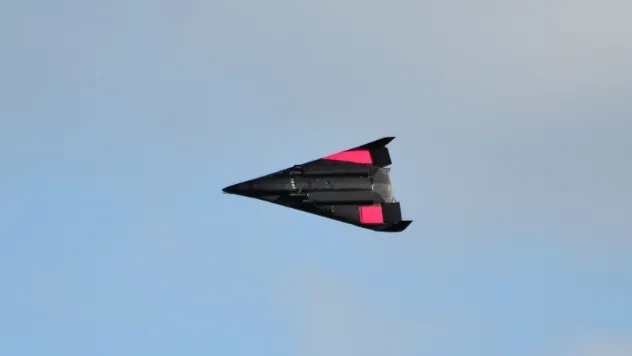21.09.2023
The company is gearing up for a full-scale version of their Aurora spaceplane using a linear aerospike rocket engine.

MIRA-Light during one of the vehicle's flight tests. (Image credit: Polaris Spaceplanes)
Polaris Spaceplanes, a German aerospace company, has successfully completed a 15-flight test campaign of its MIRA-Light prototype vehicle.
The test-flights took place over the course of three days, between Aug. 22 and Sep. 8, and were meant to demonstrate the vehicle's aerodynamics and flight control systems in preparation for a larger-scale spaceplane prototype the company plans to equip with a linear aerospike rocket engine.
MIRA-Light measures just 8.2 feet (2.5 meters) long, and flies using four electric fans. For 10 of MIRA-Light’s 15 flights, the mini-spaceplane was equipped with a mock aerospike engine to simulate its impact on vehicle performance. In total, the prototype accumulated about 40 total minutes of flight time, according to a report from European Spaceflight.
Now, engineers at Polaris Spaceplanes plan to use data collected during the MIRA-Light flights to move forward with a scaled-up, larger MIRA vehicle, which measures nearly 14 feet (4.25 meters). MIRA will be equipped with an actual linear aerospike engine for testing of the vehicle's integrated flight systems.
Both MIRA spaceplanes are precursor prototypes to the company’s ultimate demonstration model, NOVA.
Polaris Spaceplanes plans to scale up the vehicle again after testing MIRA, this time to a length of 22 feet (6.7 meters). NOVA will fly using four kerosene-fueled jet engines, in addition to its functional aerospike engine. This vehicle’s test campaign will involve full rocket-powered flights in Earth's upper atmosphere happening at supersonic speeds.
If all goes well with MIRA's upcoming demonstration missions, Polaris Spaceplanes expects to begin flying NOVA sometime in 2024.
MIRA-Light, MIRA and NOVA succeed three other prototypes that flew from 2020-2022. Polaris Spaceplanes hopes to culminate them all into its multipurpose, hypersonic transport vehicle, AURORA.
Polaris Spaceplanes markets AURORA's future design as capable of transporting a payload up to 22,000 pounds (10,000 kilograms) to suborbital velocities, and up to 2,200 pounds (1,000 kilograms) to an orbit of any inclination, according to the company's website.
Polaris Spaceplanes hopes to begin flying AURORA sometime in 2026 or 2027.
Quelle: SC

